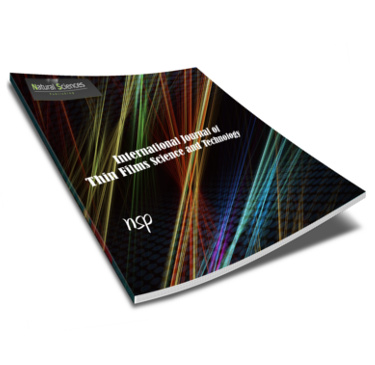International Journal of Thin Film Science and Technology

Abstract
In present study, the removal of Malachite Green (MG) dye by Activated Carbon and Activated Carbon- Lanthanum Oxide nanoparticles composites were investigated. La2O3 nanoparticles were prepared by Precipitation method and Activated Carbon-La2O3 nanoparticles composites were prepared by impregnation method. Activated Carbon and synthesized Activated Carbon-Lanthanum Oxide nanoparticles composites were characterized by FTIR spectroscopy, X- ray diffraction (XRD), Field emission gun scanning electron microscopy (FEG-SEM) and High-resolution transmission electron microscopy (HR-TEM) for surface morphological and crystalline size determination. The X-ray diffraction patterns revealed that the particles exhibited a crystal structure at the suitable temperature. The average particle size of the nanocomposites from the X-ray diffraction is about 33-44nm and also scanning electron microscopy shows good morphology and exhibited clearly cubic and hexagonal shape. The Transmission electron microscopy (TEM) shows the crystalline size of structures is 34-43 nm. Further, the photocatalytic degradation of Malachite Green dye was measured by visible absorption spectroscopy using Activated Carbon and Activated Carbon-La2O3 nanoparticles composites. To obtain the optimal conditions for the dye degradation, the effect of various experimental parameters, like amount of adsorbents, pH, concentration of dye, contact time and light intensity on the rate of reaction was studied. A tentative mechanism for the photocatalytic degradation of Malachite Green was proposed. Photocatalytic degradation of Malachite Green dye followed pseudo first-order kinetics. It was found that the dye degradation gave the best results at a pH of 8, MG Dye concentration 200 ppm and using 70 mWcm–2 light intensity with 0.080 g of adsorbent. At room temperature, the maximum removal of dye was achieved in 60 min. It was found that the percentage of dye removal was improved from 90.24% for Activated Carbon to reach 98.11% for Activated Carbon-La2O3 nanoparticles composites.
Recommended Citation
Vajapara, Shailesh; Pathan, Amanullakhan; and P. Bhasin, C.
(2023)
"Adsorption and Photocatalytic Performance of Activated Carbon and Activated Carbon-La2O3 nanoparticles Composites for Malachite Green,"
International Journal of Thin Film Science and Technology: Vol. 12
:
Iss.
1
, PP -.
Available at:
https://digitalcommons.aaru.edu.jo/ijtfst/vol12/iss1/4

